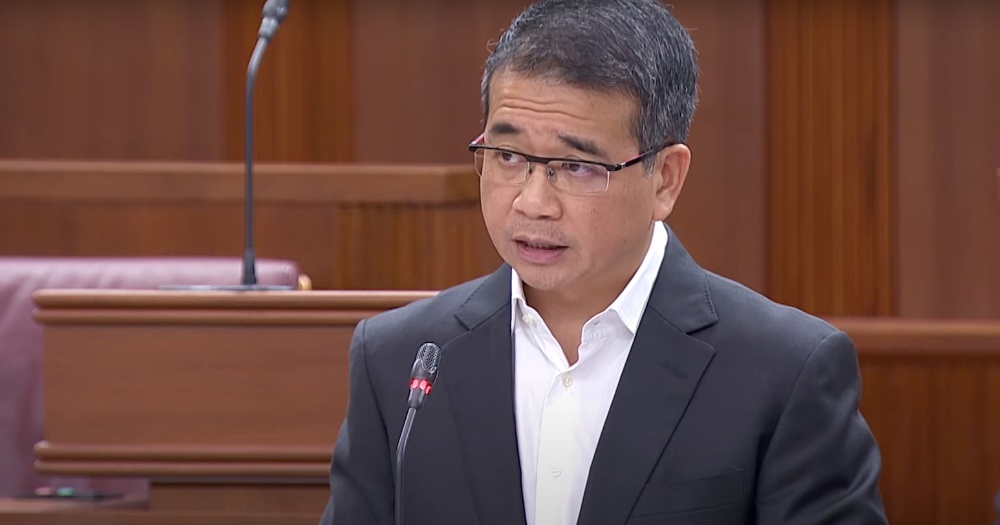The government is looking to strengthen existing community dispute avenues to better help victims of community or neighbourly disputes or conflicts to effectively put a stop to nuisance.
This has become an issue "very much on" the minds of the government, notes Second Minister for Law Edwin Tong, in view of the rise in feedback on neighbourly nuisance in 2020 possibly because of more people staying at home from last year's circuit breaker period.
In doing this, the government hopes to help better manage and resolve these disputes upfront, and also to encourage conflicting parties to take up community mediation, he said.
The minister spoke about this to address questions about community disputes raised by Members of Parliament (MPs) during the Committee of Supply debate for the Ministry of Law (MinLaw) on Tuesday (Mar. 2).
How to deal with neighbour disputes?
Currently, those needing help with a neighbour dispute can turn to community mediation at the Community Mediation Centre (CMC), and also have the option to commence further legal proceedings at the Community Disputes Resolution Tribunal (CDRT), which one could think of in simpler terms as a court for neighbourly nuisance or conflict.
Mediation at CMC
Over 80 per cent of cases mediated at the CMC reached "amicable settlement", a figure which is "a strong endorsement of mediation" as a means of resolving disputes, Tong said.
He added that CMC's 147 mediators had all completed mediation training and assessment before being appointed, adding that from 2018, new mediators had to meet an additional requirement of being accredited by the Singapore International Mediation Institute (SIMI).
Mediators are appointed for a three-year term, and must complete at least 12 hours of additional training to be re-appointed for a subsequent term.
Proceedings at CDRT, but they don't necessarily solve the relationship or fundamental issues
Parties can also commence CDRT proceedings against their neighbours, but Tong noted that there are limits to what can be achieved that way.
The CDRT, he says, takes the role as "arbiters of who is legally right and legally wrong," making the dispute resolution process "a binary zero-sum game".
He pointed out that they are not structured to help parties mend their relationships and cannot supervise or monitor how the parties behave once the proceedings are over.
Inter-agency committee reviewing dispute management framework
"These disputes often sit somewhere between being an annoyance, and an offence," Tong said, making it necessary for a "multi-faceted approach" involving several ministries.
Thus, an inter-agency committee has commenced a comprehensive review of the Community Dispute Management Framework, to address the challenges posed by neighbour disputes.
Those involved are MinLaw, the Ministry of Culture, Community and Youth (MCCY), the Ministry of National Development (MND), and Ministry of Home Affairs (MHA).
The committee was studying three areas:
1. Managing and resolving neighbour disputes "upfront"
"When the disagreements arise, we need to quickly identify and address the root cause of issues," Tong said, as this would help to preserve the goodwill and relationship between the neighbours.
2. Increasing take-up of mediation
There was a challenge in "getting parties to mediation", too — there are many parties that refuse to turn up for mediation, as mediation is largely voluntary.
"This is not healthy for the neighbour neighbourly relationship in the longer term," said Tong.
Thus, the committee is looking at ways to improve the take-up rate of mediation, which may include making it compulsory, increasing awareness of its benefits, and more.
3. Improving CDRT process
While the CDRT should be "the avenue of last resort", Tong acknowledged room for improvement in the following areas:
- Considering the possibility of the CDRT making interim orders, especially for severe cases, and those involving "continuing nuisance".
- Considering whether clarifications to the legislation are needed, to ensure that parties do not find proceedings "unreasonably onerous", as some claimants find it difficult to gather evidence for their claims, despite CDRTs not being bound by the strict rules of evidence normally applicable in court cases.
- Looking at whether the current measures are sufficient to protect communities from anti-social, nuisance behaviour.
- Closing the gaps in cases where respondents refused to comply with CDRT orders.
On the latter point, Tong cited an example of an "egregious case" where a respondent "started to create a different type of nuisance not covered by the CDRT’s order, presumably just to spite the claimant," and stressed that CDRT orders "must be taken seriously.
If a party does not comply with a CDRT order, the CDRT may issue a Special Direction.
Non-compliance with a Special Direction is a criminal offence, and can result in a court order that kicks the offending party out of his or her place of residence.
A total of 24 Special Directions have been issued by the end of last year for egregious cases, Tong said.
To date, two Exclusion Orders have been made.
Culture is "fundamental"
Beyond more steps the government can take, though, Tong stressed that "it is fundamental is for neighbours to maintain a culture of open communication, mutual understanding and respect."
Top image via Gov.sg/YouTube.
If you like what you read, follow us on Facebook, Instagram, Twitter and Telegram to get the latest updates.
